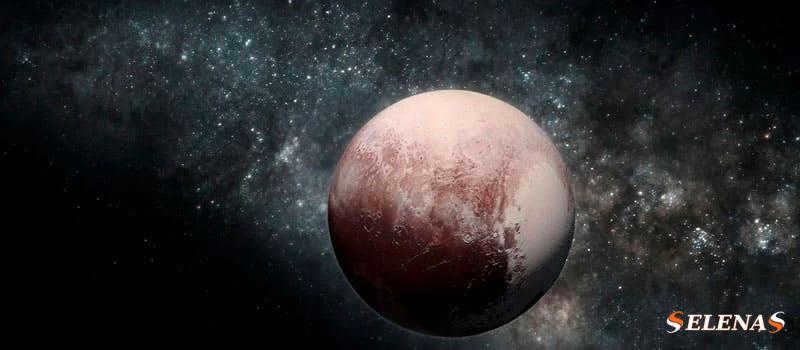
Do you want me to inform you about the duration of the journey from Earth to Pluto?
Please, make yourselves comfortable. We are about to commence. Let’s get started!
At the onset of the 21st century, a decision was made to no longer consider Pluto as a planet.
It didn’t quite fit the new criteria for defining a planet.
Instead, it, along with some friends beyond Neptune, became an object that necessitated a completely new classification.
As a result, it was categorized as a dwarf planet, prompting many to question the implications for the solar system’s composition.
Since Pluto’s “demotion” to the status of a dwarf planet, several positive developments have taken place.
It sparked contemplation among individuals regarding this particular region of the solar system, the limited knowledge we possess about it, and, in light of the identification of numerous other entities of comparable size, the potential existence of other hidden entities.
Considering the immense distance from Earth, are there any forthcoming missions aimed at revisiting this specific area of outer space?
Moreover, what would be the estimated duration required to reach Pluto?
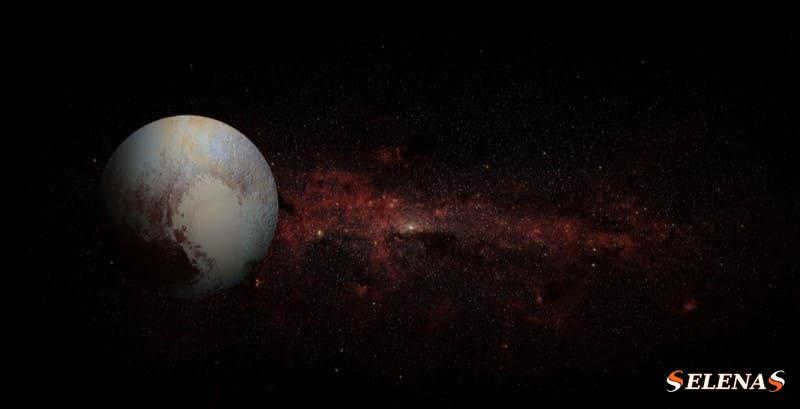
Interesting Facts about Pluto
- Discovered by Clyde W. Tombaugh on February 18, 1930;
- Has a major semi-major axis of 39.482 astronomical units;
- Takes 247.94 Earth years to complete one orbit around the sun;
- Has an eccentricity of 0.2488;
- Has a tilt of 17.16 degrees;
- Has an average radius of 1188 kilometers;
- Rotates once every 6 days and 9 hours;
- Has a surface temperature ranging from approximately 33 K to 55 K;
- Has an apparent magnitude of 15.1 on average;
- Has five known moons: Charon, Hydra, Kerber, Nix, Styx;
- The closest distance to Earth is about 4.71 billion kilometers;
- The farthest distance to Earth is about 7.5 billion kilometers.
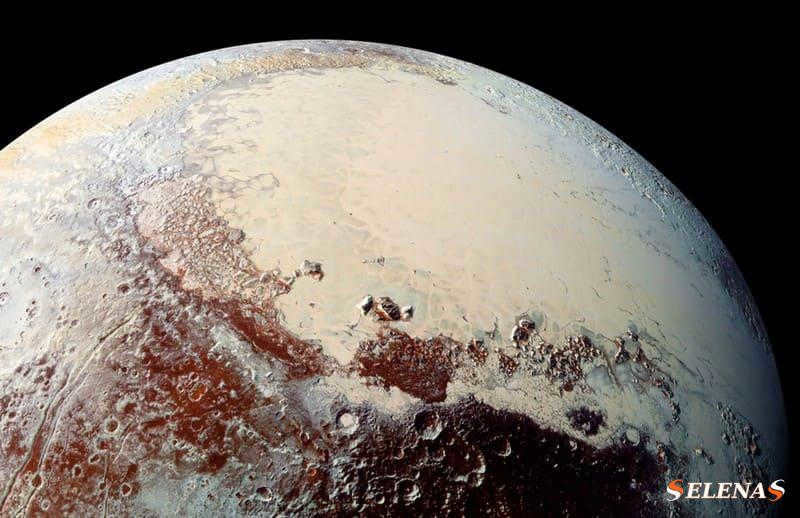
What is the distance between Earth and Pluto?
At present, the distance between Pluto and our planet Earth is 5,048,047,233 kilometers (33.744112).
When considering this vast distance, it takes light approximately 4 hours, 40 minutes, and 38.4 seconds to travel between these two celestial bodies.
The point of closest approach between Earth and Pluto occurs when they are in opposition to each other.
Opposition happens when Earth comes between the Sun and an outer planet, or in this case, a dwarf planet.
This event takes place roughly once every Earth year, with a slight delay of 1 or 2 days each year from our perspective on Earth.
The closest possible alignment of these planets occurs when Pluto is at its closest position to the Sun (perihelion) and Earth is at its farthest (aphelion).
Pluto can be approximately 7.5 billion kilometers (4.7 billion miles) away from Earth at its farthest point.
This occurs when the planets are positioned on opposite sides of the Sun.
At its closest, Pluto can be about 4.71 billion kilometers (2.9 billion miles) away from Earth.
Pluto’s orbit is highly elliptical and eccentric, with an inclination of 17 degrees.
During its 248-year orbit, the distance between Earth and Pluto can vary significantly.
It takes about 20 years for Pluto to orbit Neptune during its journey around the Sun.
The closest distance that Pluto and Earth will reach by 2100 actually occurred on June 20, 2013, at a distance of 31.45 astronomical units, or 4,704,718,037 kilometers.
What is the estimated duration of a journey to Pluto?
Due to the unconventional orbit of the dwarf planet, the time it takes to reach Pluto may differ.
As of now, we have only dispatched one mission, New Horizons, to this celestial body, which was launched on January 19, 2006.
After nearly 9 and a half years, New Horizons reached its closest approach to Pluto on July 14, 2015, coming within 12,500 kilometers of the planet.
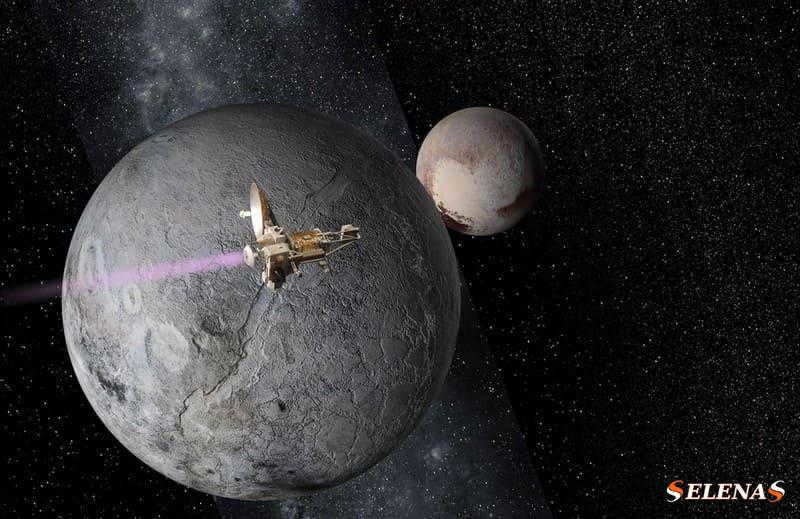
If the objective was solely to conduct a flyby, it would be possible to reach Pluto in a shorter amount of time.
However, increasing the speed of the approach would limit the amount of scientific research that could be conducted upon arrival.
Given the high cost of exploring such a distant region of the solar system, it is crucial to maximize the scientific value of these missions.
There is currently a single proposal for an orbiter and lander to Pluto that plans to employ a form of fusion engine known as a Direct Fusion Drive.
This engine is based on a fusion drive technology that is presently undergoing research and development.
If successful, this engine has the potential to propel a spacecraft weighing up to 1000 kilograms to Pluto in approximately four years.
Furthermore, it would generate a significant amount of power for scientific instruments, greatly enhancing the scope of valuable scientific work that can be conducted.
This type of engine has the potential to revolutionize space exploration within our solar system.
How frequently does the closest approach happen?
The occurrence of close approaches between Earth and Pluto takes place slightly more than once per Earth year, during the opposition of the planet and the dwarf planet.
Nevertheless, due to Pluto’s highly eccentric and elliptical orbit, the distance at which they are in opposition can vary significantly.
Dwarf planets have longer orbital cycles, resulting in much less frequent close approaches to Earth.
In 2013, the two objects achieved their nearest approach in approximately 200 years.
Pluto’s Exploration Endeavors
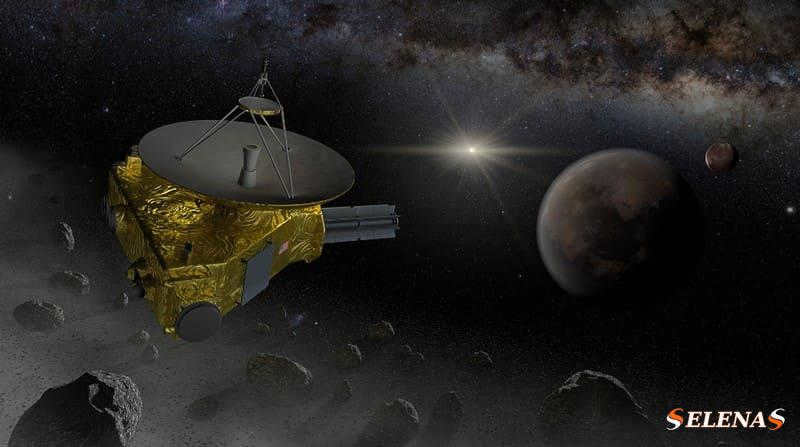
The Only Mission to Pluto
Up until now, there has been just a single expedition to Pluto.
“Previous explorations have been unable to reach the farthest regions of our solar system.
Pluto was left unexplored until the New Horizons mission was launched on January 19, 2006.
The spacecraft journeyed past Mars and Jupiter, conducting fascinating research on Jupiter’s four largest moons before entering a dormant state for the majority of its trip to the outer solar system.
Finally, on July 14, 2015, after a span of 9 years and 176 days, it reached its closest approach to Pluto.
“New Horizons provided us with unprecedented up-close photographs of Pluto, its moons, particularly Charon, and continues to gather groundbreaking data about the Kuiper Belt to this day.”
Upcoming Missions
While there are currently no concrete plans, there are several potential missions in the works to revisit Pluto and potentially explore Neptune.
As previously mentioned, there is a proposed fusion-powered orbiter and landing module.
Although it is not currently being developed, there is an ongoing research project focused on creating a fusion engine.
In addition, there are two other mission proposals that involve using the thin atmosphere of Pluto to “hop” a spacecraft across its surface.
Another mission, known as Persephone, aims to investigate whether or not Pluto has a subsurface ocean.
There is a genuine sense of excitement that we are on the verge of groundbreaking technologies that will revolutionize exploration of the solar system.
We can only hope that innovative concepts like the DFD Drive progress beyond the theoretical stage and become a reality.
If you have any inquiries or would like to share your thoughts about this article, feel free to drop them in the comment section below.
We look forward to hearing from you! Come join the conversation!
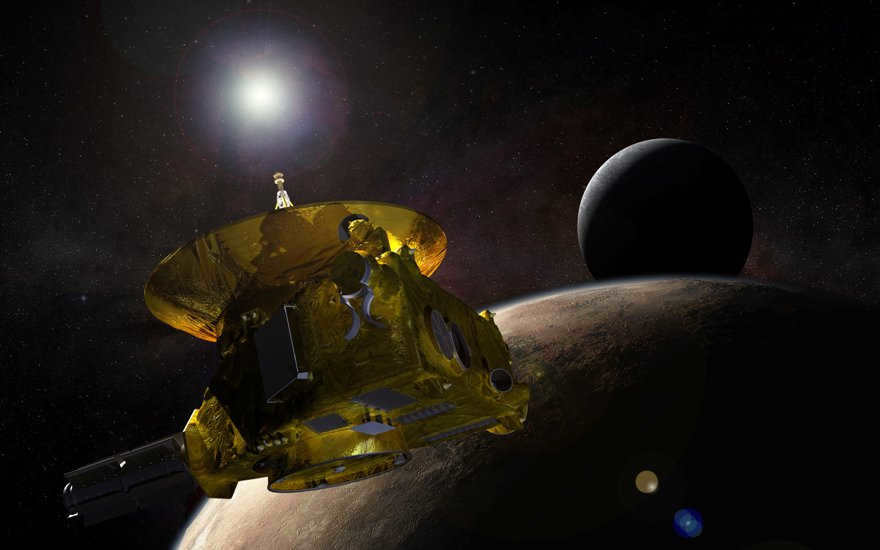
New Horizons Mission – An expedition to the dwarf planet Pluto: exploration and capturing of first images, external system examination, satellite overview, and exploration of the Kuiper belt.
At present, the deployment of probes to other planets in the solar system no longer surprises anyone, as there is already a whole fleet of them on Mars. However, in the past, taking the risk of long-distance launches was a rarity. The Voyager-2 probe holds the record for the farthest distance traveled, having visited the outer planets in 1989 and now continuing its journey into interstellar space.
Another major breakthrough was made by the New Horizons spacecraft, which successfully accomplished its primary objective of reaching and exploring the dwarf planet Pluto in 2015.
Origin of the New Horizons expedition
Back in 1980, researchers dispatched Voyager 1 on a journey to Saturn and contemplated the possibility of using the planet’s gravity as a catapult to launch a spacecraft towards Pluto in 1986. However, their plans hit a snag as they desired to investigate the moons of Saturn, making the maneuver unfeasible.
Determined to explore uncharted territory, the scientists set out to discover an alternative solution. After all, the vast expanse beyond had yet to be explored, particularly the Kuiper belt and its invaluable celestial bodies.
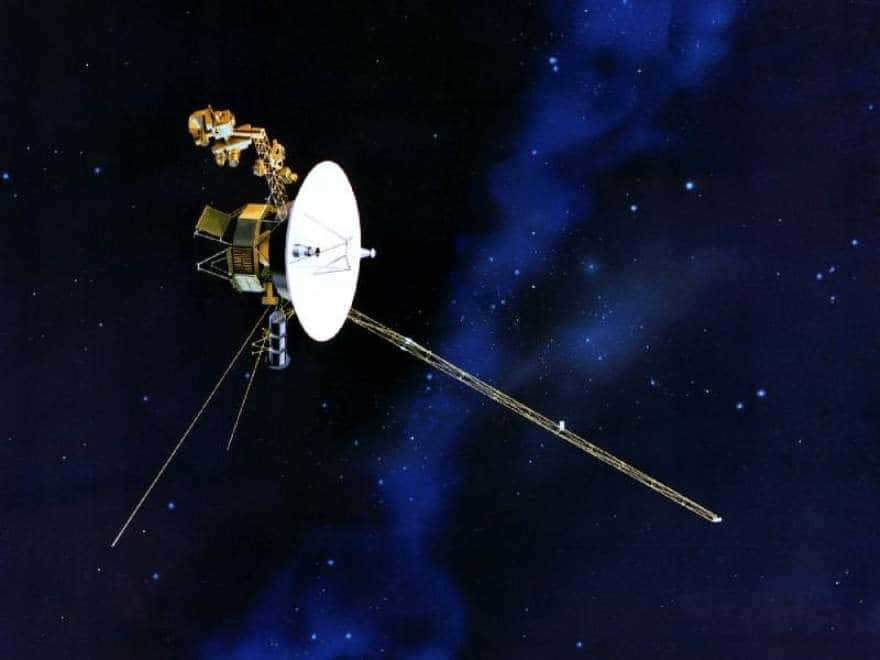
In 1989, Alan Stern and Fran Bagenal formed the Pluto Underground Project with the aspiration of journeying to the planet and exploring beyond. During the 1990s, they embarked on expeditions to numerous trans-Neptunian objects, attracting growing fascination.
Following the cancellation of the mission in 2000, they resolved to develop the New Horizons spacecraft. Disputes over funding ensued for several years, and after securing a loan of $650 million, Stern’s team committed to repaying the debt within a span of 14 years.
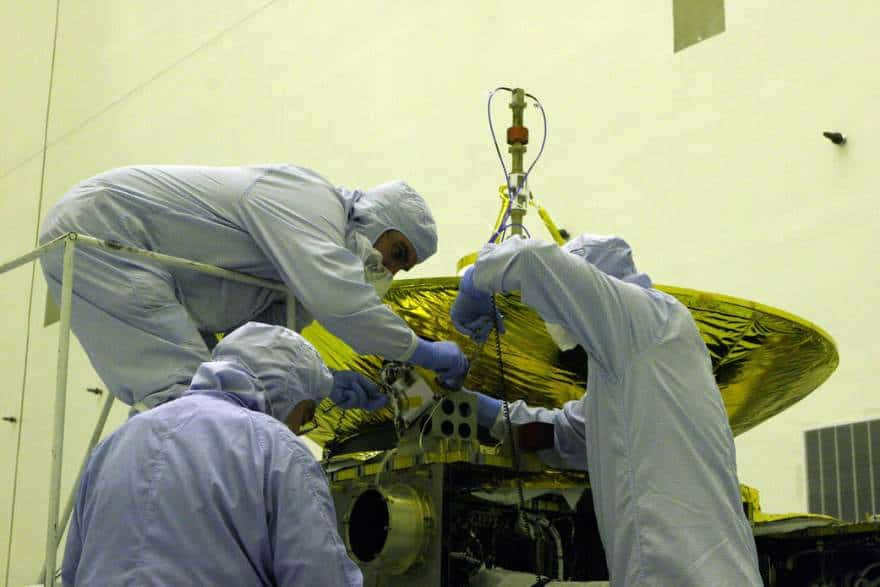
Engineers are currently engaged in the development of the New Horizons spacecraft’s instrument.
New Horizons mission to Pluto
The primary objective of the mission was to reach Pluto by 2015. Alan Stern was selected as the lead investigator. Along with scientific equipment, the spacecraft also carries the U.S. flag, various symbols representing Earth, and 30 grams of the ashes of Clyde Tombaugh, the individual credited with the discovery of Pluto.
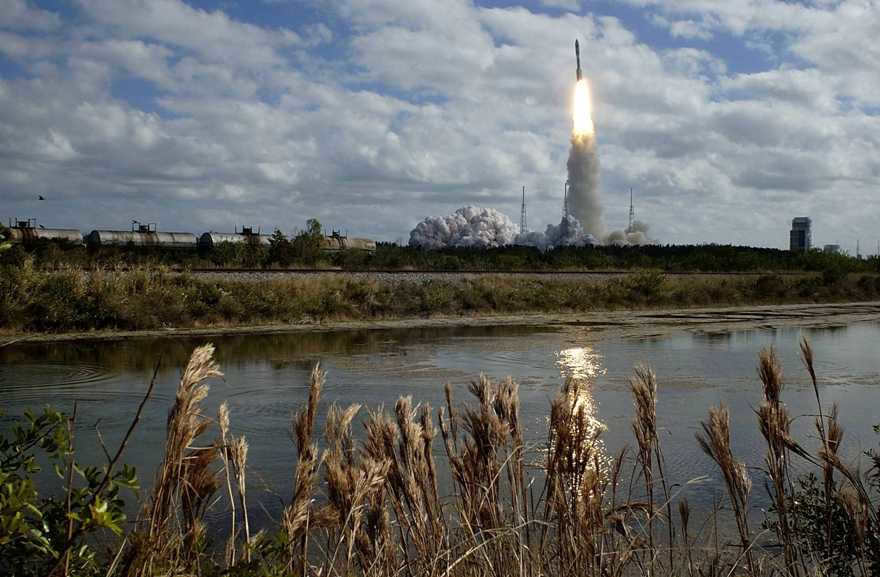

The New Horizons spacecraft is scheduled to be launched in 2006 from the Kennedy Space Center.
The Instruments of the Pluto Mission
The probe is equipped with seven instruments:
- Alice – a UV spectrometer that analyzes the composition and structure of the atmosphere and searches for atmospheric layers around Charon and the Kuiper Belt.
- LORRI – a telescopic camera that gathers information about impacts from great distances.
- PEPSSI – an energetic particle spectrometer that determines the composition and plasma density of a planet’s atmosphere.
- Ralph – a visual and IR thermal imager/spectrometer that generates color, composition, and heat maps.
- REX – calculates the composition and temperature ratio of the atmosphere.
- SDC (developed by students) – detects cosmic dust.
- SWAP – a spectrometer that analyzes atmospheric “emission” and monitors the interaction of Pluto and stellar winds.
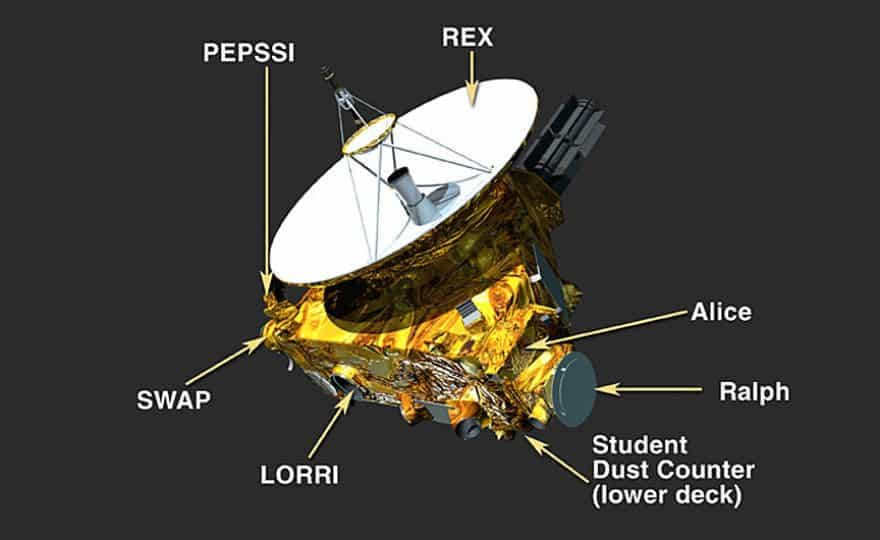
New Horizons instruments were utilized to conduct a thorough analysis of Pluto
Mission to Pluto Commencement
Due to inclement weather conditions, the spacecraft was launched two days later than originally planned (January 19) in 2006. The launch took place at Canaveral Air Force Base, reaching its maximum velocity of 16.5 km/s. It only took nine hours to reach lunar orbit. However, it did not surpass the speed record set by Voyager 1, which was 17.145 km/s.
Exploration of the Inner Solar System
The winter of 2006 was dedicated to the analysis of the instruments’ functionality. On April 7, the spacecraft passed by Mars, traveling at a speed of 21 km/s. At this point, the spacecraft had journeyed 243 million kilometers away from the sun. In June, it swiftly flew past asteroid 132524 AP at a distance of 101867 km. The Ralph instrument assisted in capturing images and determining a diameter of 2.5 km. Pluto can be observed in the photograph below.
The initial photographs of Pluto were taken in September 2006.
New Horizons captured its first images of the distant dwarf planet during a test of the Long Range Reconnaissance Imager (LORRI). These images were obtained from a distance of 4,200,000,000,000 kilometers.
Exploring the outer reaches of the solar system
In September 2006, the first pictures of Jupiter were captured from a distance of 291 million kilometers. In January, infrared images of Callisto were received. In 2007, the spacecraft approached Europa at a distance of 2,964,860 kilometers, utilizing the gravity of Jupiter to gain a speed boost of 4 km/s and reduce the overall flight duration by 3 years.
The Jupiter mission served as a valuable dress rehearsal, allowing the spacecraft to test all of its hardware, communications, and memory buffers.
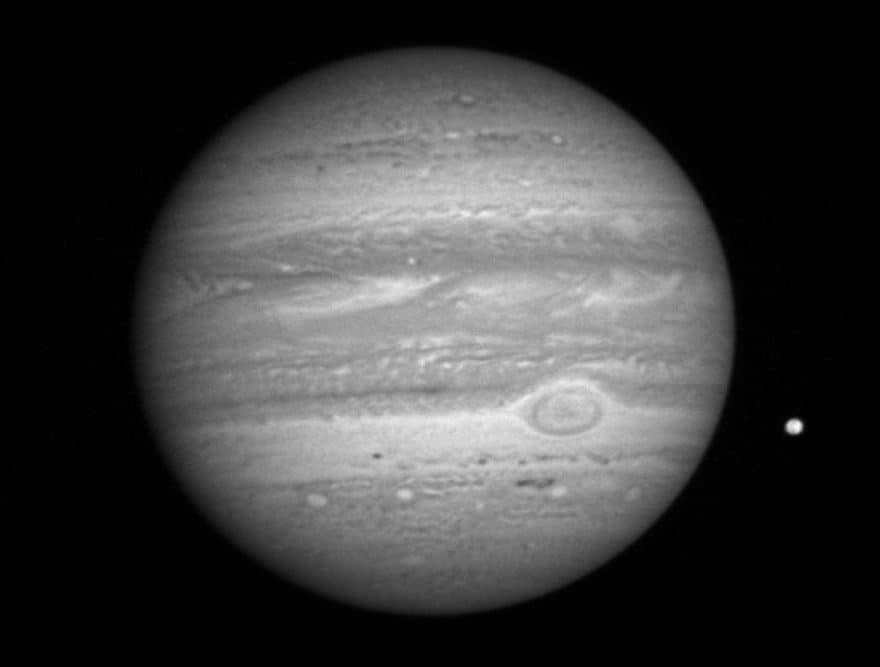
A monochrome photograph of Jupiter taken by the LORRI device in 2007
When observing Jupiter, the focus was primarily on monitoring atmospheric conditions and studying the composition and structure of its cloud cover. We were able to observe radiation shocks caused by thermal energy in the polar regions, as well as powerful storms. Additionally, we obtained close-up images of the Great Red Spot and faint rings for the first time.
Passing by Jupiter provided us with the opportunity to investigate the structure and movement of the gas plumes on its moon Io. We were able to calculate the emissions from the Tvashtar volcano, which extend 330 km from the surface. Infrared imaging also revealed the presence of an additional 36 volcanic formations.
LEISA conducted an analysis of the surface layer of Callisto, illustrating the precise impact of illumination and viewing conditions on the infrared spectrum data of the icy crust.
Following its journey past Jupiter, the spacecraft entered a state of hibernation for the majority of its time en route to Pluto. Consequently, it swiftly passed by Saturn (2008) and Uranus (2011). In 2014, it was reactivated, and the team initiated instrument calibration and route adjustments. On August 24, it successfully passed Neptune.
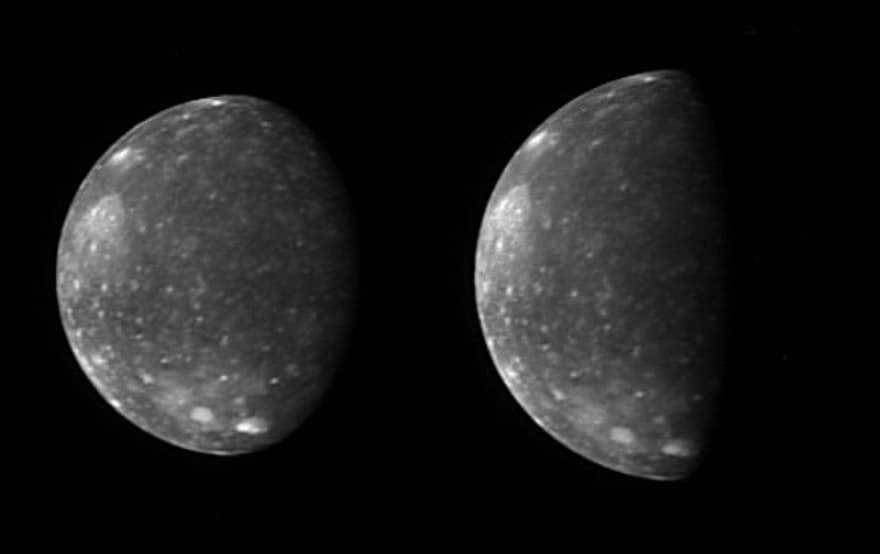

In 2007, LORRI managed to capture two images of Callisto, which happens to be the largest moon of Jupiter.
The encounter of the New Horizons mission with Pluto
In 2015, we finally had the long-awaited opportunity to rendezvous with the small dwarf planet, Pluto. On January 31, the probe successfully captured several photos from a distance of 203,000,000 km, showcasing both the planet and its moon, Charon. Subsequently, the probe captured footage of Nykta and Hydra (at 201,000,000 km), followed by Kerber and Styx.
Communication was disrupted on July 4th due to a software anomaly, causing the apparatus to enter safe mode. The issue was resolved the following day, allowing the probe to resume its approach. The closest encounter with the device occurred on July 14th, during which scientists acquired high-quality photos and gathered a vast amount of data.
Currently, the probe is en route to the Kuiper belt, where it will investigate one or two objects along its trajectory. Three potential targets have been identified: PT1, PT2, and PT3. These objects have diameters ranging from 30 to 55 kilometers and are too small to be observed through telescopes. They are located approximately 43-44 astronomical units away from the Sun and exhibit distinct differences from Pluto, characterized by their icy composition.
The composition of Pluto
The orbit and movement of Pluto
The appearance of Pluto


The exact measurement of the distance between Earth and Pluto is not possible, but it is often represented as the average between the minimum and maximum distances of the two planets. Both Earth and Pluto revolve around the center of the solar system, and their distance from the Sun determines the specific path of their circular motion.

What is the distance from Earth to Pluto?
Calculating the exact distance between Earth and Pluto in kilometers is a challenging task for most people. Pluto, which was recently reclassified as a non-planet, orbits the Sun in a highly elliptical path, making it difficult to determine its distance with a single number.
To help people understand this vast distance, scientists use images in pixels on websites and in popular science publications.
However, even the average distance between 4.2 billion kilometers and 7.5 billion kilometers is incredibly vast and hard to comprehend.
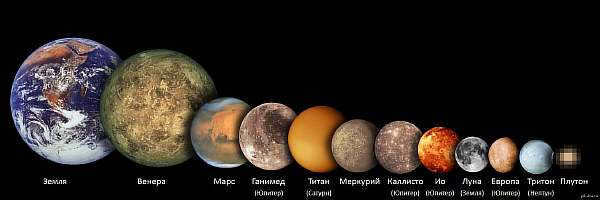
However, once the dimensions of Pluto are revealed, the same individual begins to wear a knowing smile. The reason being, the dwarf planet only surpasses the Russian Federation’s area by a mere 0.6 million square kilometers (17.7 to 17.1 million km2).
Often, astronomers and mathematicians prefer to measure the distance between Earth and Pluto in astronomical units as it provides a more illustrative perspective. It is important to note that an astronomical unit represents the Earth’s major semi-axis or the distance between the Earth and the Sun.
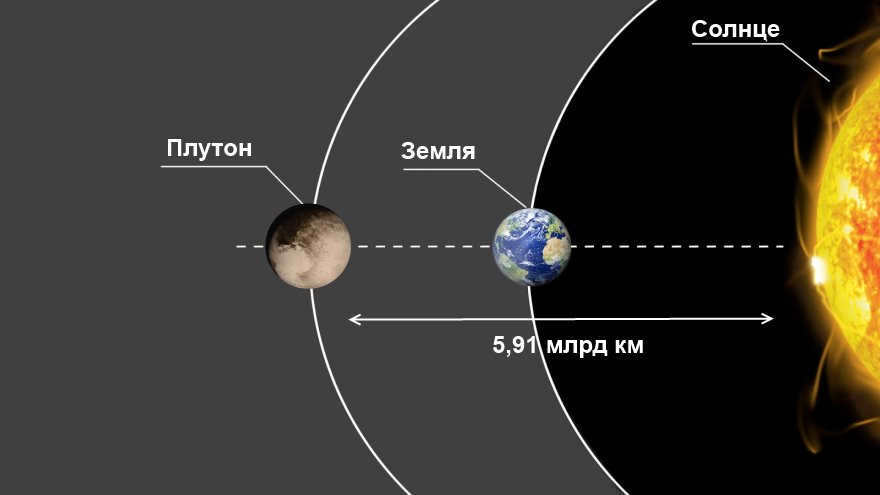
Here is some unique data:
- The distance from the Earth to the Sun is approximately 150 million km (to be more precise, it is 149.6 million km, and according to international agreement, this measurement is often represented as 149,597,870,700 meters);
- Pluto is closest to the Sun at a distance of 29.7 astronomical units (about 4.4 billion km);
- The maximum distance of Pluto from the Sun is 49.3 astronomical units (about 7.4 billion kilometers);
- If we subtract one unit – the distance from the Earth to the Sun – from these measurements, we find that at its farthest point in orbit, the former planet of the Solar System will be at 48.3 astronomical units, which means it is almost 50 times farther away than the shining star in our system.
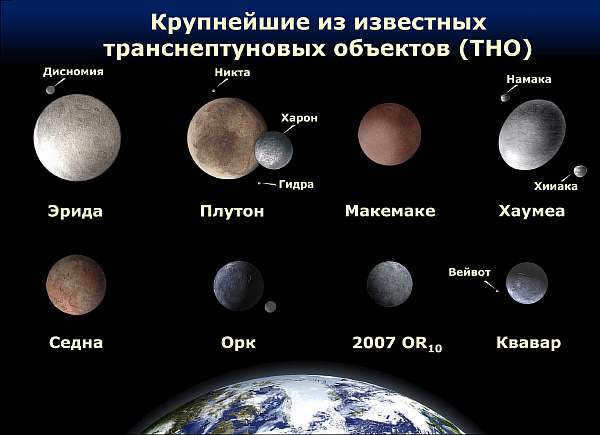
However, it’s important to note that these numbers are only rough estimates of the distances involved. The actual distance can vary depending on the Earth’s position in relation to the star and its distant neighbor. If the Earth is directly between them, the distance gap would be approximately 4.2 to 7.2 billion kilometers. However, if the Earth is positioned behind the Sun, the distance would range from 4.5 to 7.5 billion kilometers. These are billions, not millions, of kilometers, making it extremely challenging to comprehend the vastness of this distance.
Interesting information about the separation
During the initial six months of 2015, the small celestial body was situated at a distance of 32.48 astronomical units from the Sun. Consequently, presently, there are specific moments when the closest separation will amount to 4.7 billion kilometers. Conversely, during the opposition, when the imaginary line connecting the Sun and the extreme points is drawn, the maximum separation will reach 5.02 billion kilometers.
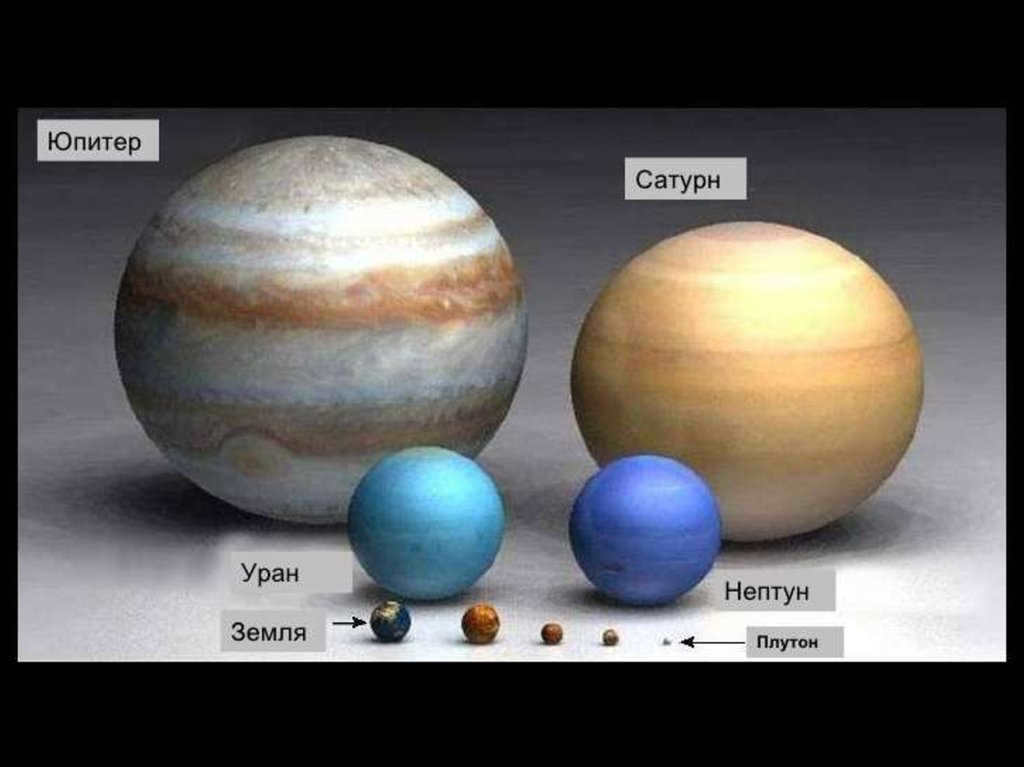
Modern science has created a starry sky map that allows us to easily calculate the distance in kilometers that the planets have traveled in their mutual rotation. This map also shows the location of the planets in relation to the center of the system and the direction in which they will continue to move in the heliocentric model. Here are some additional distance measurements:
- If we consider science fiction literature, it is conceivable that in the near future, spacecraft capable of achieving light speed will be created. Light speed has been quantified for a long time and is equal to 300 thousand kilometers per second. In a metaphorical sense, it takes approximately 1 light second to reach the Earth’s satellite (the Moon’s distance varies depending on its position in orbit). A single light second is sufficient to travel around the third largest planet, which is not among the smallest, approximately 7.5 times.
- The New Horizons spacecraft was launched in 2006 and embarked on a nine-year journey to reach Pluto. When it finally arrived at the dwarf planet, the mission spent several days gathering valuable data from its surface. However, retrieving information from the spacecraft in outer space proved to be a challenging and time-consuming task, taking an entire year for the data to be transmitted back to Earth. The analysis of the data revealed the presence of ice made of nitrogen and water, as well as the simplest hydrocarbons known as tholins in Pluto’s atmosphere. It is worth noting that the atmosphere of Pluto is incredibly thin, with even the surface having a concentration of no more than 0.000001% compared to Earth’s.
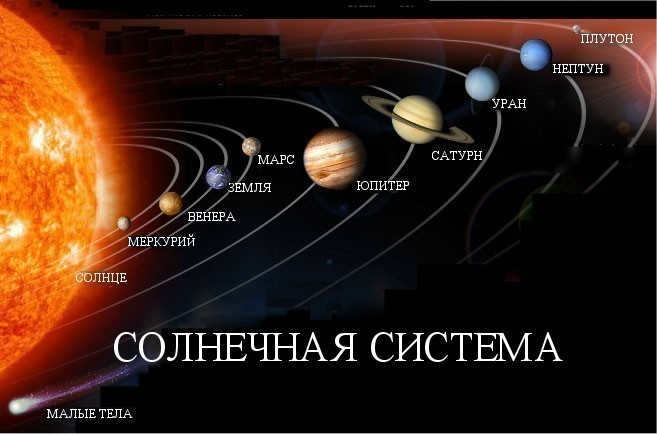

It took nearly a year and a half for information to be transmitted from Pluto, the former planet, to Earth.
To avoid prolonged waiting, scientists received the most intriguing data in a condensed format, which took about a month and a half.
Near-space explorers do not overlook other celestial bodies. In the last century, some information about the Moon, Mars, and Venus became known. Subsequently, probes were launched to explore distant objects, such as the giant planets. While humanity’s interest in Venus and Mars is understandable, it may seem that Pluto, located far away, is not a very suitable object for exploration. However, this is not the case.
Watch the video on this topic.
The Unique Phenomenon of Pluto
In the conventional perspective of the older generation, who were taught astronomy as a mandatory subject in school, Pluto still remains as one of the planets in the solar system. However, the International Astronomical Union has already declared that this tenth largest object does not meet the definition of a planet, which was formulated by astronomers in the 20th century. One of the parameters that does not comply with the established criteria is its small size, which led to its classification as a dwarf planet.
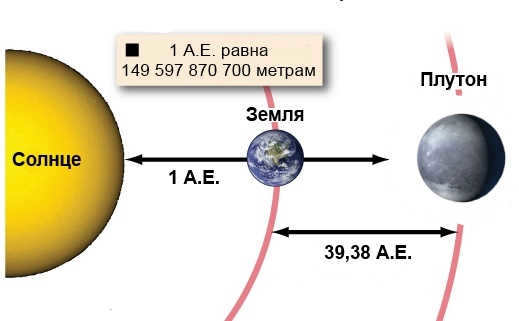
Upon closer examination of the figures, it becomes evident that the ex-planet is smaller in size compared to Earth’s moon. However, it does possess a substantial satellite – Charon, which, despite being classified as such, is of such significant proportions that it prompts the consideration of a new classification – that of a binary planet.
In addition to Charon, Pluto also has four other satellites – Nycta, Hydra, Kerber, and Styx. The latest addition to this roster was only discovered in 2012. In recent times, the achievements of astronomers, astronauts, and space technology developers have received less media attention than in the past. Nevertheless, progress in this field continues to advance rapidly.
For instance, investigations on trans-Neptunian objects have persisted, and findings have revealed that Erida (or Xena), previously believed to surpass Pluto in size, actually falls short of the former planet’s dimensions and also fails to meet the scientific criteria for planetary classification.
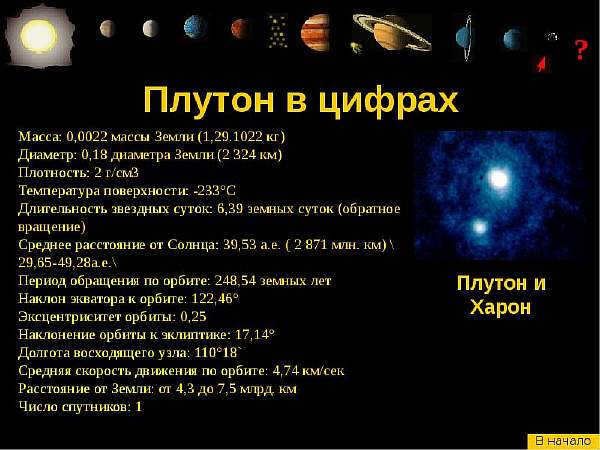
In 2010, Pluto and Xenu were considered nearly identical, but in 2015, it was revealed that Pluto surpasses Xenu in certain aspects. This discovery is particularly significant in the field of scientific knowledge, especially considering that Erid was initially found in 2005. It is remarkable to gain such information about objects located at such a vast distance.
Focus on Pluto
The hypothesis put forward by Soviet scientists served as the foundation for stripping Pluto of its planetary status, but there are still some researchers who argue that it should be considered a planet. The crux of the assumption, which was made in the 1950s, was to classify Pluto as one of the many dwarf objects that exist.
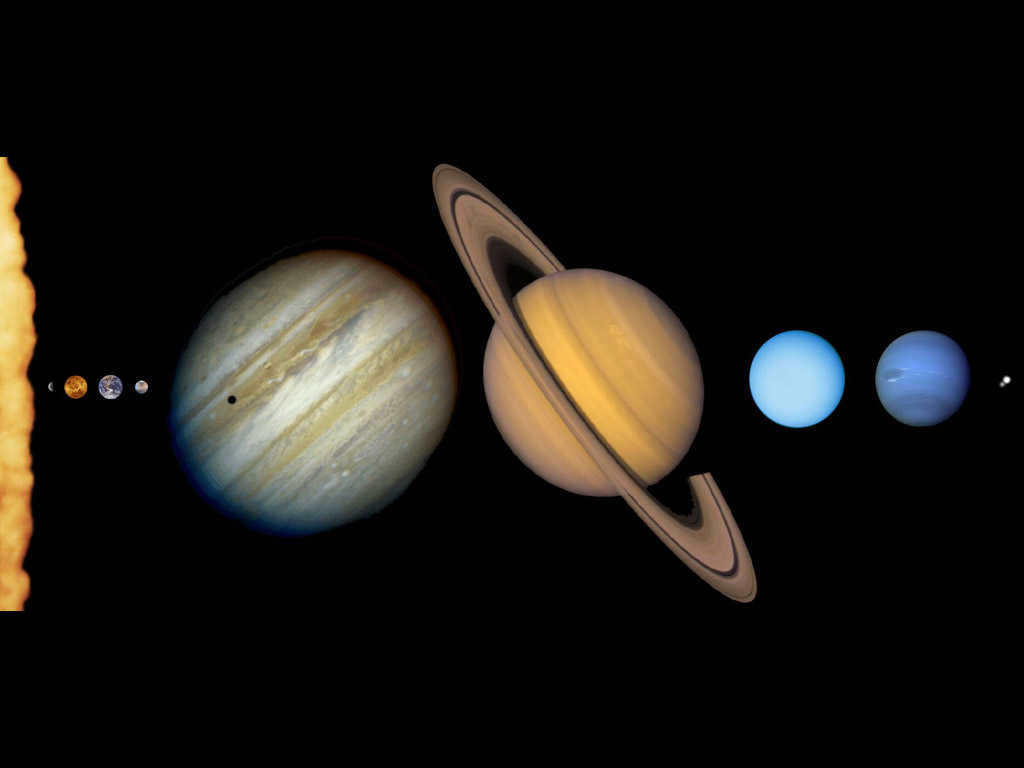
- In 2002, Kvavar was discovered, making it the largest object discovered after Pluto, and in 2007, its companion Wavot was also discovered;
- Sedna, one of the most distant objects aside from long-period comets, was discovered in 2003;
- Haumea, rotating faster than any other celestial object with a diameter of over 100 km, was discovered in 2004, marking the discovery of a plutoid;
- In 2005, the Makemake telescope captured highly technical images of the third plutoid.
Pluto has always captivated researchers. As a former planet, it held an air of mystery and the promise of new discoveries, especially considering it was only discovered in 1930.
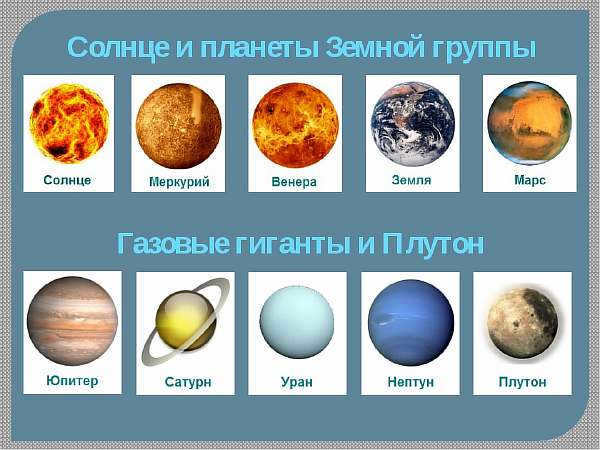
Pluto got its name from a mythical figure who also ruled over a frigid and dim universe. Only time will reveal the extent of mankind’s achievements in space exploration. Until we have vehicles capable of traveling at the speed of light, these vast distances remain impassable for manned spacecraft.

Marveling at the Significance of NASA New Horizons Approaching an Icy Dwarf Planet
Considering the comparably diminutive scale of our planet in relation to celestial bodies, it can be challenging for our human minds to grasp truly vast distances. With Earth measuring just under 25,000 miles in circumference, it’s a manageable concept. The moon, on average, is approximately 238,855 miles away… not too difficult to comprehend. However, as we venture further into the solar system, the depths become more profound. Enter Pluto.
NASA’s New Horizons spacecraft is set to make a pass over Pluto this month, which is approximately 39 astronomical units (AU) from Earth. Astronomers use AU as a unit of measurement for distances, which is based on the average distance between Earth and the Sun, about 93 million miles. Therefore, Pluto is situated approximately 3.7 billion miles away. To truly comprehend the magnitude of this distance is challenging. Even a single billion is difficult to fathom. Yes, it equates to one thousand million, but how can we visualize it in more relatable terms? To put it into perspective, consider this: a billion minutes ago, the Roman Empire was steadily gaining power, and a billion hours ago, the Stone Age was in full swing.
So, how can we grasp the concept of 3.7 billion miles? NPR’s Adam Frank pondered the same question and sought to illustrate it using a familiar frame of reference: driving.
Using a basic calculation – traveling in a straight line from Earth to Pluto, without taking into account the movement of each planet and moving at a speed of 65 miles per hour – he determined that the journey would require approximately 6,293 years.
“Naturally, embarking on a 6,293-year expedition is not something one would want to attempt with young children. The asteroid belt is merely a collection of tourist traps, and the other destinations beyond Saturn are becoming increasingly sparse,” Frank explains, which is why he also provides an alternative calculation if we were to fly on a Boeing 777. With a maximum speed of 590 miles per hour, the trip to Pluto would only take around 680 years.
This puts things into perspective when considering the remarkable fact that we currently have a spacecraft that is on the verge of reaching Pluto. Launched in January 2006, it is currently traveling at a staggering rate of over 50,000 miles per hour. A figure that is truly difficult to comprehend on its own.
Suggested:
What is the duration required to fully charge an electric vehicle?

Charging an electric vehicle is just as simple and convenient as charging your mobile device. This informative piece will outline the process of determining the duration of each charging session.
It will take an extensive period for the Earth to recover its biodiversity

Recent studies indicate that it will require millions of years for extinct species to be reintroduced to the planet.
What is the time frame for garment production?

Having an understanding of the amount of time it takes to create each individual shirt or pair of jeans should have an impact on a shopper’s perception of the price.
What is the recommended duration for spending time in nature to decrease stress levels?

Recent research has revealed that spending a mere 20 minutes in an urban park can effectively alleviate stress levels and enhance emotional well-being.
Why did it take me so much time to discover the concept of wabi-sabi?

At last, I discovered the concept of wabi-sabi. However, in some way, I had always been aware of it.
The exact distance between Earth and Pluto varies depending on the relative positions of the planets and can range from 4.3 billion kilometers to 7.5 billion kilometers.
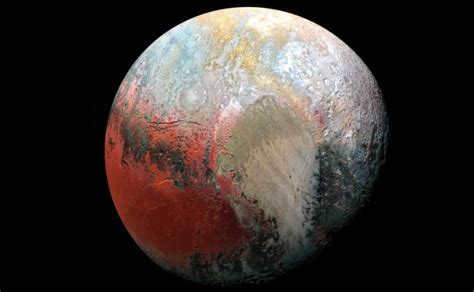
Table of Contents:
- How long does it take to travel to Pluto?
- Is it possible to observe Pluto?
- What led to the reclassification of Pluto?
- How much time does it take for a radio signal to reach Pluto?
- How long does it take to travel to Mars?
- How many planets exist in our universe?
- What was the first planet to be discovered?
- Are there 9 planets in total?
- Which planet is no longer considered a planet?
- Which Russian astronaut has been to the moon?
How much time does it take to travel to Pluto?
The distance between Earth and Pluto is approximately 5 billion kilometers. According to available information on the internet, it took the Pioneer spacecraft 11 years to reach Pluto, while the Voyager spacecraft took 12 years.
How long does it take to travel to Pluto at the speed of light?
Light, such as radio waves, can travel from the Sun to Pluto in 247 minutes at perihelion and 410 minutes at aphelion. The intensity of light also varies by a factor of 2.8. When Pluto is in opposition, the signal from Earth reaches it 8 minutes faster compared to when it is in square.
Which is larger, Pluto or Russia?
Pluto has a surface area of 16,650,000 square kilometers, which is equivalent to 0.33 times the surface area of Earth. On the other hand, Russia has a surface area of 17,098,242 square kilometers, which is much larger than a small planet located at the edge of the solar system.
The distance from Mars to Earth can vary depending on their positions in relation to the Sun. The minimum distance is about 55.76 million km when the Earth is directly between Mars and the Sun. On the other hand, the maximum distance is around 401 million km when the Sun is directly between Earth and Mars.
When comparing the sizes of Pluto and the Moon, it is evident that the Moon is larger. Perelman stated that Pluto is relatively small and is similar in size to Earth. However, according to the latest data, Pluto has an equatorial radius of 1400 km, while the Moon has an average radius of 1738 kilometers. Therefore, the Moon is larger than Pluto.
When it comes to the speed of flying to the Moon, it depends on various factors such as the type of spacecraft and the trajectory. The average speed of a manned mission to the Moon is about 39,000 km/h.
On an airplane, with a maximum speed of 800 kilometers per hour, it would take approximately twenty days to travel. However, on the Apollo spacecraft, which had a speed of several thousand kilometers per hour, it only took 72 hours to reach the Moon. Nowadays, with the advancements in technology, a modern spacecraft can complete the journey to the Moon in just 9 hours.
Can we catch a glimpse of Pluto?
Pluto is recognized as the most distant known major planet in our solar system. Despite its distance, it is possible to observe Pluto through photographs or with the aid of powerful telescopes. Its stellar magnitude, for instance, was approximately 14 m in 1999 and is projected to decrease further over the next century.
Why was Pluto removed?
Pluto was excluded as a planet due to its failure to meet one of the criteria outlined in the new definition of a planet. According to this definition, the mass of the non-satellite objects in its orbit is too significant compared to Pluto’s mass to be considered dominant.
What is the tiniest planet in the world?
Mercury holds the title for the smallest planet in our solar system. It has a radius of approximately 2,440 kilometers, which is one-third of the Earth’s width. In comparison, the Moon has a radius slightly over 1,609 miles. Following Mercury, Mars takes second place with a radius of about 3,389 kilometers.
There has been an increase in the value of Pluto this week. Currently, the price of PLU stands at $10.61.
Is it feasible to inhabit the planet Pluto?
Typically, when Pluto is at its closest point to the Sun, the atmosphere freezes; at its farthest point, the surface temperature increases and the ice turns directly into gas. Therefore, it is scientifically impossible for any form of life to survive on the surface of Pluto.
What is the average time it takes for a radio signal to reach Pluto?
On average, it takes approximately 4-5 hours for a radio signal to travel from Earth to Pluto. As an example, during the New Horizons mission’s flyby of Pluto, the radio signal took about 4.5 hours to reach the dwarf planet. Additionally, the time difference between the signal’s travel time when Pluto is at its farthest and closest point to the Sun can be as much as three hours!
How long does it take to travel to the Moon?
| Landing place | Sea of Rains, Hadley Apennines. |
| Duration of flight | to the Moon – 78 hours 38 minutes 27 seconds |
| SCN | 05351 |
How long does it take to travel to Mars?
Based on calculations made by Professor Craig Patten, a physicist at the University of California, San Diego, the average time it would take to reach Mars is about nine months, or approximately 270 days, assuming fuel efficiency. It would then take another nine months or so to return from Mars.
What is the duration of a trip to Mars?
How long does it take to travel to Mars? According to the estimations made by the experts involved in the Mars One project, the journey would last approximately 210 days, which is equivalent to 7-8 months. While humans have not yet had the opportunity to step on the surface of the Red Planet, numerous unmanned spacecraft and “Mars rovers” have already successfully explored it.
How many planets are there in the Universe?
| Number of known planets | 8 |
| Number of dwarf planets | 5 |
| Number of satellites | 639 (204 for planets and 435 for small solar system bodies) |
| Number of small bodies | More than 1,000,000 (as of November 2020) |
Who claims that Pluto is not a planet?
The International Astronomical Union (IAU) Assembly has made a decision to reclassify the Solar System: Pluto has been redefined as a dwarf planet. In an official vote on August 24, Pluto will be designated as a dwarf planet.
Why can’t we classify the Sun as a planet?
Which planet was the first to exist in the world?
What was the name of the 10th planet?
Phaeton, also known as Olbers’ planet, is a fictional planet that once existed between Mars and Jupiter but later disintegrated to form the asteroid belt.
How many planets are there?
How many planets are there? There are a total of nine planets in our solar system: Mercury, Venus, Earth, Mars, Jupiter, Saturn, Uranus, Neptune, and Pluto.
How many days does it take to reach the Moon?
How long does it take to travel to the moon? In short, the average travel time is about 3 days. Between 1969 and 1972, NASA sent 18 astronauts to the moon as part of the Apollo space program.
The average distance between the Earth and the Moon is approximately 384,467 km (0.00257 astronomical units, equivalent to about 30 Earth diameters).
What can be found in close proximity to the Moon?
Within the field of astronomy, a conjunction refers to the arrangement of celestial bodies that positions them in close proximity to each other within the sky. Typically, these conjunctions occur between the Moon and one of the following planets: Venus, Mercury, Mars, Jupiter, or Saturn. It is important to note that this occurrence is purely a visual phenomenon.
Which satellite holds the title for being the largest in the world?
Ganymede holds the distinction of being the largest and most massive satellite within our solar system. With a diameter of 5268 km, it is 41% the size of Earth, 2% larger than Saturn’s satellite Titan (the second largest satellite), 8% larger than Mercury, 9% larger than Callisto, 45% larger than Io, and 51% larger than the Moon.
What planet has been demoted from being considered a planet?
Pluto, previously recognized as the most distant planet in our Solar System, has been reclassified and is no longer considered a planet. This determination was made by the International Astronomical Union during their Congress held on August 24th in Prague, Czech Republic. As a result, the number of planets in our Solar System has been reduced to eight.
Which planet is the closest to Earth?
Based on calculations, it is determined that Mercury is the planet that is closest to Earth for the majority of the time. It also holds the distinction of being the closest planet to Saturn, Neptune, and all other planets within our Solar System.
Which Russians have visited the Moon?
I and Oleg Makarov comprised the first crew, while Valery Bykovsky and Nikolai Rukavishnikov formed the second crew.
Video: What is the distance between us and Pluto?
Did our responses prove helpful?
Trending over the past 24 hours

What is the translation of the word Lucifer?
Lucifer, which means “light-bearing” in Latin, is derived from the words lux, meaning “light”, and fero, meaning “bearing”. In Roman mythology, Lucifer is the personification of the morning star.

What is the name of the daughter of Lucifer and Chloe?
Brianna Hildebrand revealed in an interview with The Wrap that she had a great time portraying Rory, the daughter of Lucifer.

Can you tell me the names of Lucifer’s siblings?
Michael is an angel who happens to be Lucifer’s twin brother.


Who was the initial love interest of Lucifer?
At the conclusion of the fourth season, the two of them openly acknowledged their affection for one another. Lucifer recognized his primary romantic attachment.

What was the reason for Lucifer’s transformation into a mortal?
In the final moments of season 4, they openly acknowledged their love for one another. Lucifer came to the realization that his initial affectionate attachment.

What is a term of endearment for Lucifer?
Lucifer, who hails from Perm and comes from a family of Satanists, is lovingly referred to by his parents as “Lucik”.

What is the reason behind Lucifer’s red eyes?
When Cass stabs Lucifer with an angel blade across the rift, it triggers a change in the archangel’s eyes, turning them red.

Rowena MacLeod’s thirtieth appearance on Supernatural marks a significant milestone in her journey on the show. She has become one of the most prominent and impactful characters, second only to a select few.

In the world of “Lucifer,” both angels and humans have the power to shape their own destinies. They have the ability to make choices that can lead them to certain doom or bring them closer to enlightenment.






